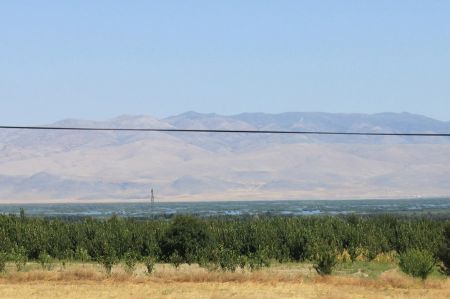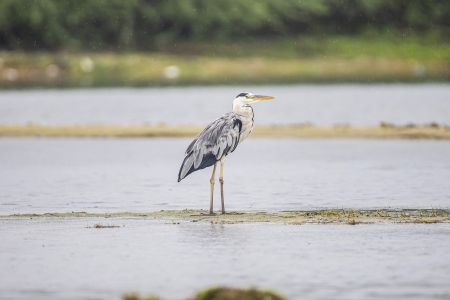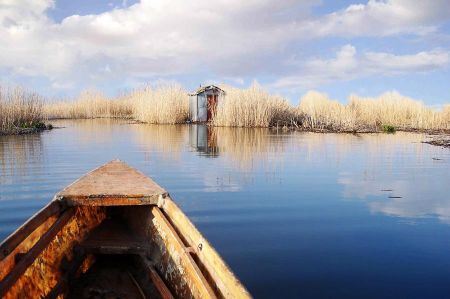Eber Gölü - swampland and bird paradise again
- Written by Portal Editor
Coming from Akşehir Lake on the D300 towards Afyonkarahisar, we also make a short stop at Eber Lake, which was once, due to the huge amounts of meltwater from the mountain range of Emir Dağları in the north and the mountain range of Sultan Dağları in the south, connected with the Akşehir Lake.
Eber and Akşehir Gölü used to form one large lake. After the sources of the lake became less and less productive, Lake Akşehir separated from Lake Eber. Lake Eber drains water into Lake Akşehir through a canal, so both lakes are still connected. The drying up of some springs in the lake and the huge amounts of water used for irrigation separated the two lakes, which are now just connected by a canal.
During the last great ice age in the Pleistocene, a huge caldera had formed at an altitude of 967 meters above sea level, which had gradually been filled up by meltwater from the surrounding mountains and by springs and streams. Huge amounts of water are fed into the lake, especially through the Akarçay stream. A large, deep body was thus able to be formed by the water. Today, Eber Lake covers an area of 125 square kilometers, making it the 12th largest lake in Turkey.
Planet wide withdrawl of water at Eber Lake too

These measures were quickly crowned with success and the lake grew again. In 1969 it was even able to expand to its largest extent to date of 164.5 square kilometers at a water depth of 21 meters, which created huge swamp landscapes in the shore areas, which were used by birds as resting and resting places and by a large number of different aquatic plants.
Industrial plants destroy nature at Eber Lake

Fortunately, the pressure from environmental and nature conservationists then caused a rethinking process that led to the construction of sewage treatment plants and waste water filters. Today, the Turkish Ministry of Culture and Nature ensures that Lake Eber is slowly developing into a nature reserve, which was officially declared as such on June 22, 1992.
Today there are hundreds of so-called floating islands on the lake, which are made of reeds and are called "Kopak" by the locals and provide habitat for birds and insects. The reason for this is the detachment of the growing roots of the reed from the bottom of the lake, which then float up and connect with other roots. Slowly left to rot on the surface, colonized by dust and plants, floating islands are formed, some of which are so large and stable that fishermen and hunters can build small huts on them as accommodation.
Water snakes, waterfowl, turtles are new inhabitants
A large number of people living near the lake in this area, which is called Central Anatolian Bolvadin, use the fertile shore regions to grow grain and vegetables, which are offered for sale on the markets and thus contribute to the livelihood. Whether the name of the lake actually comes from the once nomadic Turkmen, who called their accommodations Eber (nomad tent), is still disputed.
Please read as well:
